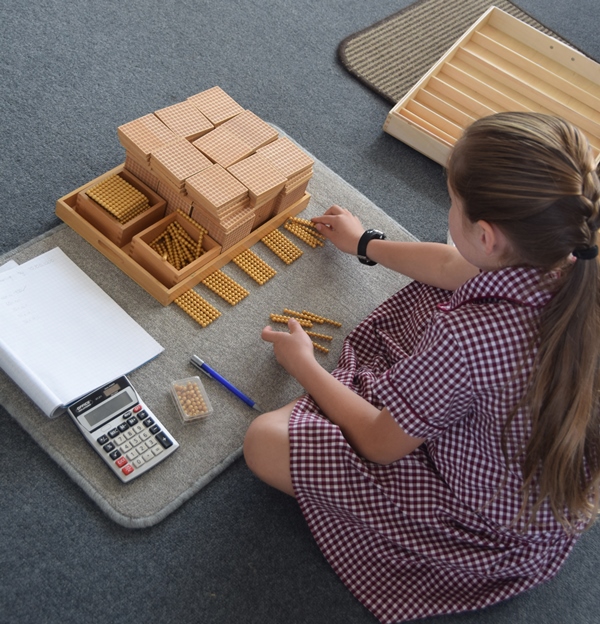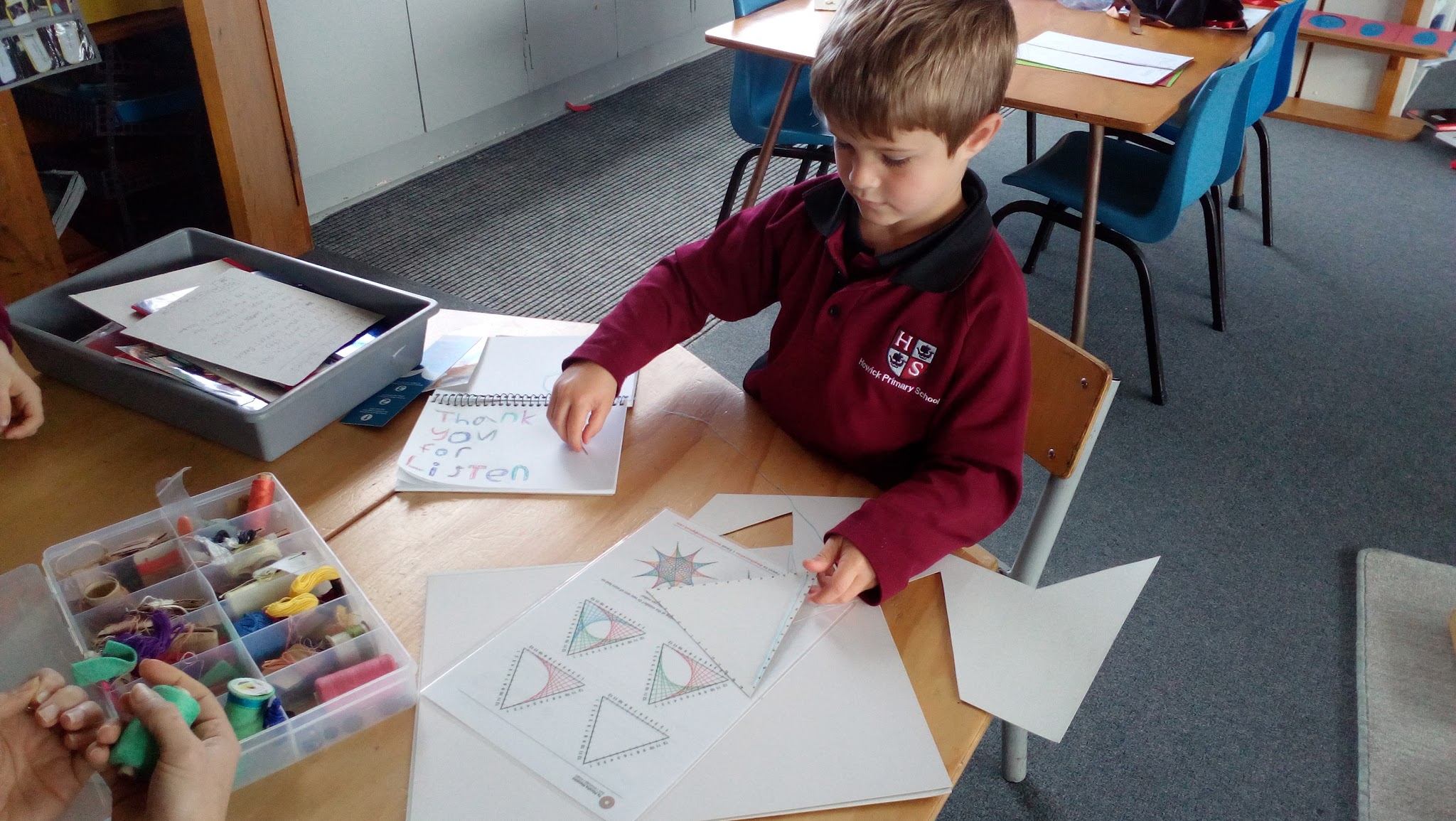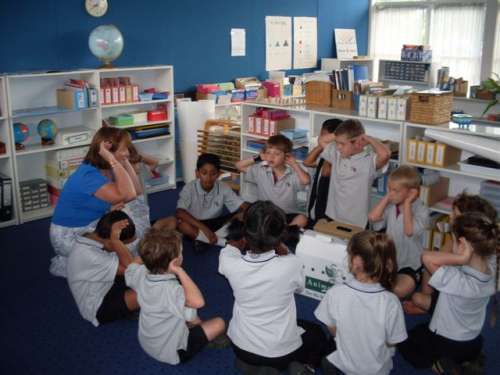 CLASSROOM
CLASSROOM
'The child is much more spiritually elevated than is usually supposed.
He often suffers not from too much work, but from work that is unworthy of him'
Maria Montessori
In the Montessori classroom the environment is designed to maximize independent learning and exploration.

Children and teachers respect concentration and do not interrupt those who are busy at work. The 3 hour morning work cycle enables the children to develop great powers of concentration and allows them to become fully absorbed and complete the work that they are doing without interruptions. It also means that they are learning to become independent learners. The children are free to move around the room instead of staying at desks, however they must still respect the space and concentration of other children. The children are used to working independently and this enables the teachers to teach children one at a time or in small groups.
 The Montessori classroom itself is very peaceful and orderly (with less wall displays than state classrooms). This allows the children to concentrate on their work without many distractions around the room. The learning materials are set out neatly on the shelves with everything having a specific place and in a particular order. The means the child can always find what they need and what comes next in their learning.
The Montessori classroom itself is very peaceful and orderly (with less wall displays than state classrooms). This allows the children to concentrate on their work without many distractions around the room. The learning materials are set out neatly on the shelves with everything having a specific place and in a particular order. The means the child can always find what they need and what comes next in their learning.
 Programme planning and evaluation ensure that a child's development is monitored and extended. Individual learning plans (including goal setting) are developed for each student - by both the student and the teacher. The teacher maintains comprehensive records of each child's development and progress based on ongoing and systematic observation.
Programme planning and evaluation ensure that a child's development is monitored and extended. Individual learning plans (including goal setting) are developed for each student - by both the student and the teacher. The teacher maintains comprehensive records of each child's development and progress based on ongoing and systematic observation.

The learning plan offers challenging activities while providing opportunities to succeed. Each successful step in the learning process builds the child's confidence to take further risks and make wider explorations. Each step is taken as the child becomes ready, without feeling threatened by being pushed ahead too fast, or stifled by being made to wait for others to catch up. As the children work independently they therefore have the freedom to choose the work that interests them and that is at their level. As the child makes learning choices, they are further developing their judgment and time-management skills and thus taking on responsibility for their learning.

The learning materials build on each other in a scientifically designed sequence. They are also designed to be attractive to the children. Many of the materials are self-correcting which enables children to check their own work independently without reliance on an adult. A carefully planned series of successes ensures that the child believes in his ability to learn by him/herself. As tasks are mastered the child's confidence grows and so too does their love of learning. The extensive use of Montessori materials means that children are working with concrete and tactile objects which will enable them to then understand abstract concepts. The children are supported in their learning and they eventually work abstractly and successfully (without requiring the materials).

Teachers in a Montessori classroom will first be quiet observers, identifying each child's needs and stage of learning. Only then do they become active in guiding and encouraging the child. Teachers are continually looking at ways to extend a child's interest and potential from both their past experiences and from what motivates them to learn. The skill of a teacher to take advantage of the 'teachable moment' is a feature of Montessori teaching. The mixed age groupings mean that a child and his/her teacher will ideally be together for 3 years. This allows the teacher and child to build a strong relationship and for the teacher to acquire a detailed knowledge of the child.

The Montessori Primary curriculum is quite specific to ensure that children learn fundamental concepts and skills. There is however a choice of ways that the children can explore the concepts and practice their skills.

At any given time different children will be studying any number of different subject areas, at varying degrees of complexity. All subjects are interwoven, not taught in isolation. This means that the children will understand the relevance of what they are learning and place it in context. They learn that everything is connected: climate, crops, culture and so forth. The aim of an
integrated curriculum is to make education a coherent whole rather than an assortment of unrelated bits of information. The children have a
3 hour work cycle every morning and in the afternoons they cover additional parts of the curriculum such as music, physical education and art. In addition, the Montessori unit also offers weekly French classes taught by a native French speaker.


Children may choose to work outside or inside. The freedom to work outside is monitored by how responsible the child is. The curriculum is not solely classroom based - children have opportunities to learn outside the classroom. Most terms chidren go on school trips that are relevant to the topics that they are learning about. Every week the children take turns in working in the gardens growing flowers and vegetables (to be cooked in the classroom). When a new garden is planned the children will design it, apply for funding, go to the garden center to purchase the plants and then finally plant and tend to the new garden.

Children are grouped in classes of mixed ages and mixed abilities. Younger children look to the older children for guidance. They watch what can be achieved by the older children and seek to learn more. Older children become role models often teaching the younger children, thus reinforcing and consolidating their own learning, as well as playing a leadership role. Group work gives children the opportunity to mix with different ages and different abilities. This all helps develop a spirit of cooperation and empathy.

Montessori believed (and modern scientific data and testing is now confirming this) that rewards systems and competition to meet external standards are ineffective tools to motivate children to learn. This relates back to the essential part of Montessori philosophy that children have an inner drive to develop and learn. So you will not see reward systems in Montessori classrooms and testing is kept to a minimum. However as part of the State Curriculum, children in the Montessori Unit are required to be assessed in relation to national standards in a similar way to other children at Howick Primary.
Links
 CLASSROOM
CLASSROOM
![]() The Montessori classroom itself is very peaceful and orderly (with less wall displays than state classrooms). This allows the children to concentrate on their work without many distractions around the room. The learning materials are set out neatly on the shelves with everything having a specific place and in a particular order. The means the child can always find what they need and what comes next in their learning.
The Montessori classroom itself is very peaceful and orderly (with less wall displays than state classrooms). This allows the children to concentrate on their work without many distractions around the room. The learning materials are set out neatly on the shelves with everything having a specific place and in a particular order. The means the child can always find what they need and what comes next in their learning.![]() Programme planning and evaluation ensure that a child's development is monitored and extended. Individual learning plans (including goal setting) are developed for each student - by both the student and the teacher. The teacher maintains comprehensive records of each child's development and progress based on ongoing and systematic observation.
Programme planning and evaluation ensure that a child's development is monitored and extended. Individual learning plans (including goal setting) are developed for each student - by both the student and the teacher. The teacher maintains comprehensive records of each child's development and progress based on ongoing and systematic observation.


